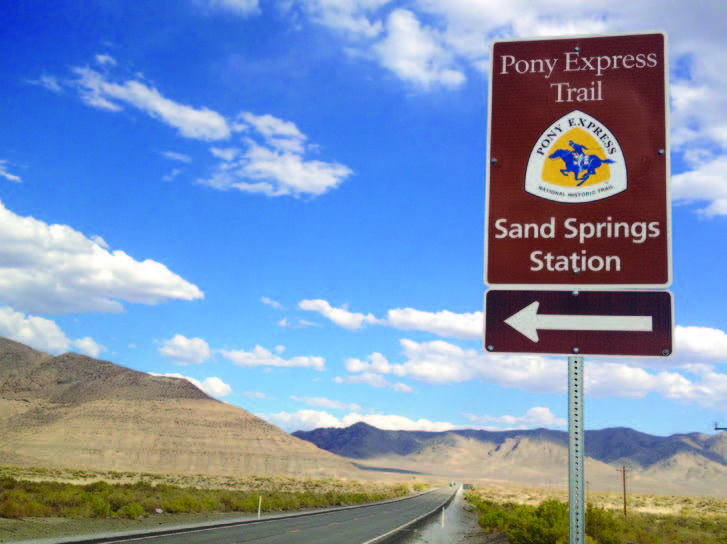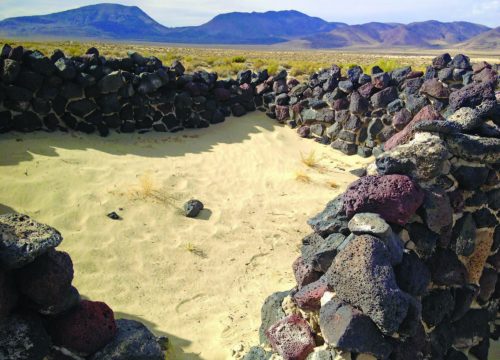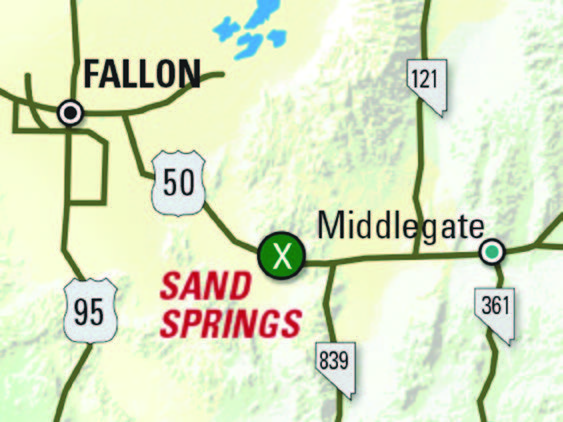Sands Of Time
Sands Of Time
SANDS OF TIME
Former Pony Express station is well worth the short Highway 50 detour.
STORY & PHOTOS BY GREG MCFARLANE
 No American institution that lasted a mere year and a half— not Zachary Taylor’s presidency, the Tennessee Oilers, nor the “Da Ali G Show”—is remembered as nostalgically as the Pony Express. The revolutionary service, which began in April 1860, was defunct by the fall of 1861.
No American institution that lasted a mere year and a half— not Zachary Taylor’s presidency, the Tennessee Oilers, nor the “Da Ali G Show”—is remembered as nostalgically as the Pony Express. The revolutionary service, which began in April 1860, was defunct by the fall of 1861.
When the Pony Express debuted, a series of courageous riders and horses was heralded as the fastest way to deliver mail from San Francisco to St. Joseph, Missouri: the journey took 10 days. The following year, the transcontinental telegraph rendered the Pony Express obsolete.
Though the Pony Express route crossed such obstacles as the Rocky Mountains and the Sierra Nevada, the stretch through the Great Basin was as inhospitable as any. The terrain was mostly flat, but the punishing heat and lack of water on the Nevada leg made the trek arduous for both carrier and mount.
 Of the 43 Pony Express stations in Nevada, most have disappeared without a trace, existing only in ledger books and maps of the time. Buckland Station (see article on page 26) is the best preserved of those that remain. Forty-five miles east lies another, at one of the route’s most desolate points. Riders were never so thankful to find respite than at Sand Springs Station, at the edge of Fourmile Flat in Churchill County.
Of the 43 Pony Express stations in Nevada, most have disappeared without a trace, existing only in ledger books and maps of the time. Buckland Station (see article on page 26) is the best preserved of those that remain. Forty-five miles east lies another, at one of the route’s most desolate points. Riders were never so thankful to find respite than at Sand Springs Station, at the edge of Fourmile Flat in Churchill County.
Located within a mile of U.S. Highway 50, the few remains of the station are listed on the National Register of Historic Places. Not that there was much more to it in its heyday. The “building”—really just volcanic rocks arranged in the form of a foundation—contained a stable, a tack and storage shed, a telegraph room, a kitchen that doubled as a blacksmith room, a corral, and a tiny living room.
Sir Richard Burton, the legendary English explorer who’d witnessed horrors and destruction throughout four continents, saved some of his most vivid prose for Sand Springs: “The water near this vile hole was thick and stale with sulphury salts…filthy and squalid.” As for the riders themselves, they were all “cretins, except one who lay on the ground crippled and dying.” This description from a man who’d spent the previous decade fighting natives in India and tropical diseases in Tanganyika.
 The way to Sand Springs Station’s remnants is clearly marked, but most visitors drive by without a glance. Instead, they’re en route to the area’s featured attraction, nearby Sand Mountain. A 600-foot-high wall of silica, the mountain is renowned as a playground for off-highway vehicles. If you’re in the neighborhood, whether towing a dune buggy or just passing through, the detour is well worth the few minutes of your time.
The way to Sand Springs Station’s remnants is clearly marked, but most visitors drive by without a glance. Instead, they’re en route to the area’s featured attraction, nearby Sand Mountain. A 600-foot-high wall of silica, the mountain is renowned as a playground for off-highway vehicles. If you’re in the neighborhood, whether towing a dune buggy or just passing through, the detour is well worth the few minutes of your time.
